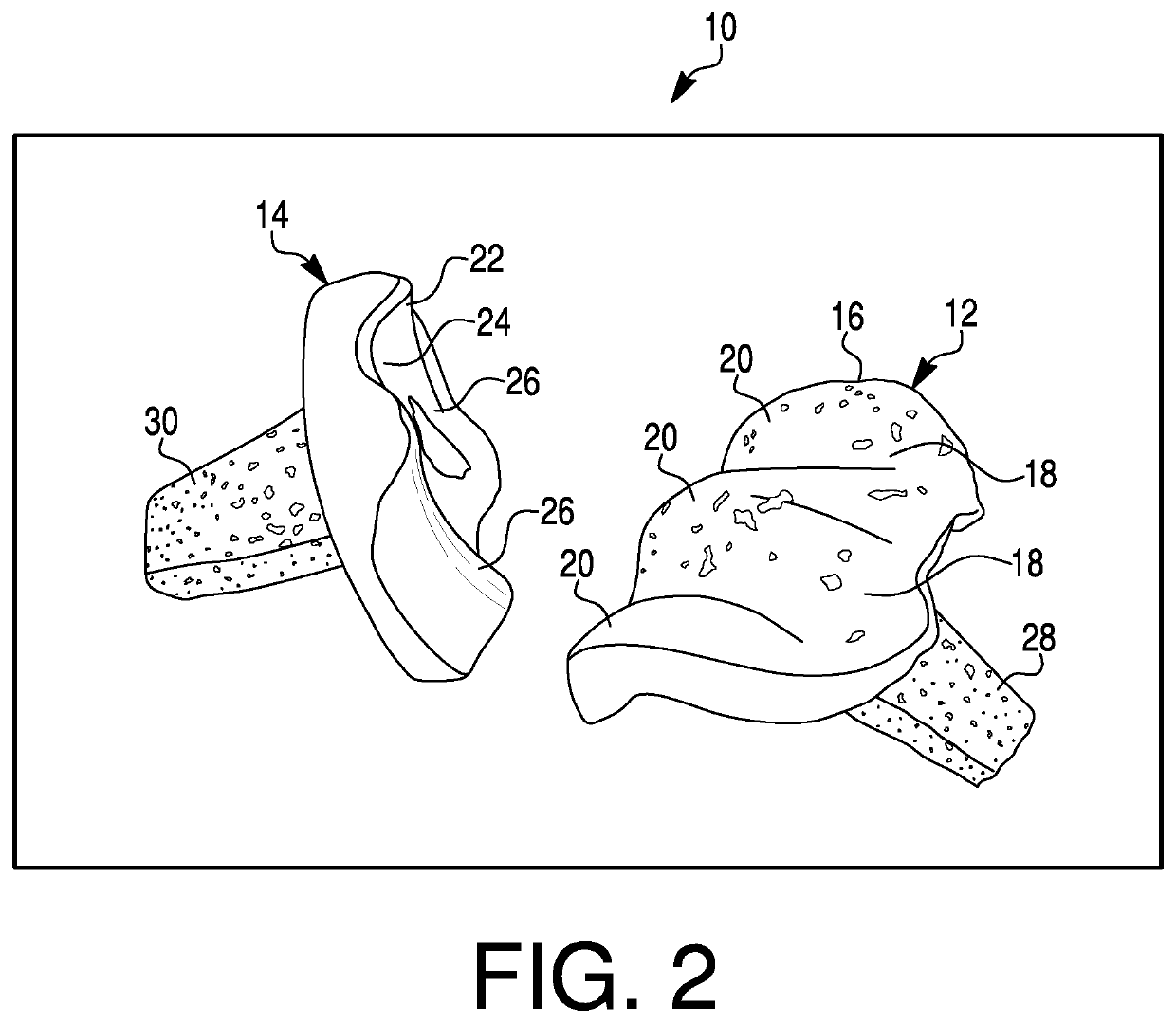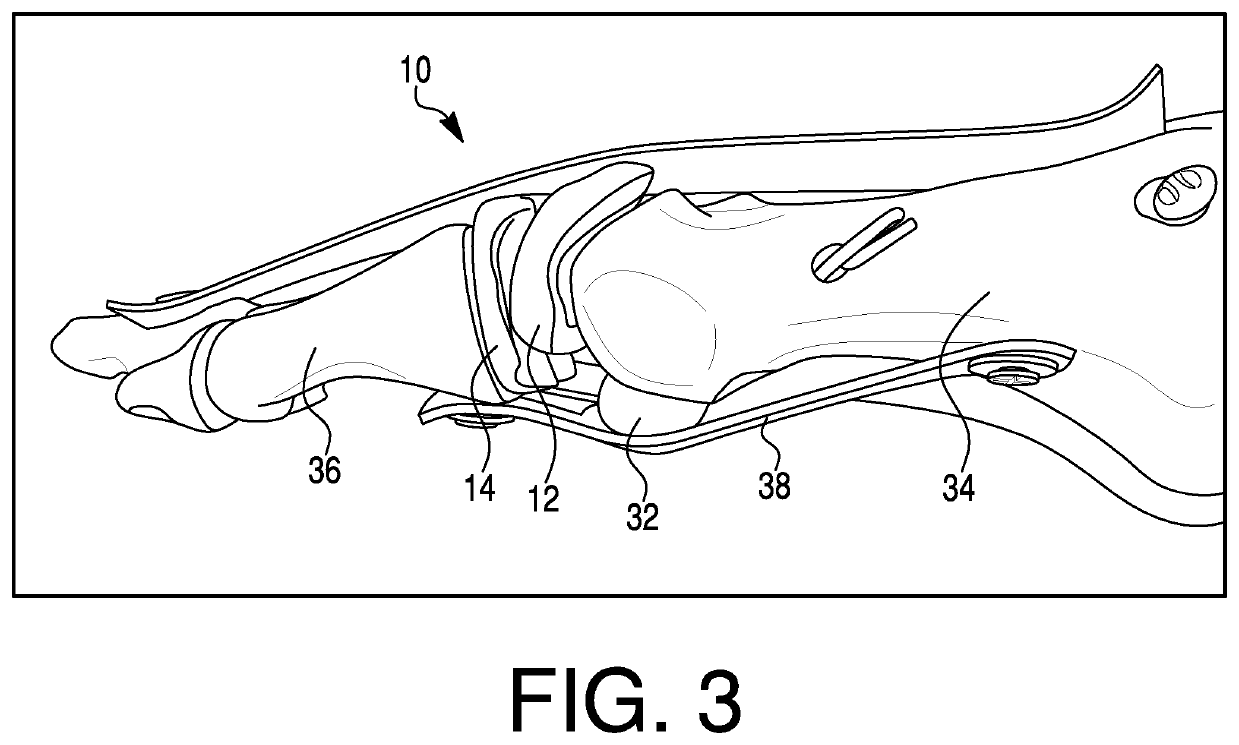First metatarsophalangeal joint implant and method for placement
a metatarsophalangeal joint and implant technology, applied in the field of joint implants, can solve the problems of reducing pain and inflammation of joints, and affecting the function of patients, and achieve the effect of improving the range of motion of patients and reducing the deformation of silicone over tim
- Summary
- Abstract
- Description
- Claims
- Application Information
AI Technical Summary
Benefits of technology
Problems solved by technology
Method used
Image
Examples
first embodiment
[0031]As shown in FIGS. 1 and 2, an implant (10) for the first metatarsophalangeal joint is disclosed. The joint implant (10) comprises two components, a metatarsal component (12) and a phalangeal component (14). The metatarsal component (12) has an interfacing surface (16) that is ridged to include two valleys (18) and three ridges (20). The phalangeal component (14) has an interfacing surface (22) with a central valley (24) and two ridges (26) that each form a partial valley on the side. The metatarsal component (12) has a stem (28) for engaging with the metatarsal during placement, and the phalangeal component (14) has a stem (30) for engaging with the proximal phalange during placement. The stems (28, 30) of both components (12, 14) are compression or press-fit within the bone.
[0032]During placement, the interfacing surface (16) of the metatarsal component (12) is received by the interfacing surface (22) of the phalangeal component (14) such that the central valley (24) of the p...
second embodiment
[0040]As shown in FIGS. 6 and 7, an implant (110) for the first metatarsophalangeal joint is disclosed. The joint implant (110) comprises two components, a metatarsal component (112) and a phalangeal component (114). The metatarsal component (112) has an interfacing surface (116) that is ridged to include two valleys (118) and three ridges (120). The phalangeal component (114) has an interfacing surface (122) with a central valley (124) and two ridges (126). The metatarsal component (112) has a stem (128) for engaging with the metatarsal during placement, and the phalangeal component (114) has a threaded stem (130) for engaging with the proximal phalange during placement. The stem (128) of the metatarsal component (112) is compression fit into the metatarsal (34) during placement, but the stem (130) of the phalangeal component (114) is threaded to receive a screw 42, which passes through both the distal phalange (40) and proximal phalange (36). Threaded stem (130) is received by and...
PUM
 Login to View More
Login to View More Abstract
Description
Claims
Application Information
 Login to View More
Login to View More - R&D
- Intellectual Property
- Life Sciences
- Materials
- Tech Scout
- Unparalleled Data Quality
- Higher Quality Content
- 60% Fewer Hallucinations
Browse by: Latest US Patents, China's latest patents, Technical Efficacy Thesaurus, Application Domain, Technology Topic, Popular Technical Reports.
© 2025 PatSnap. All rights reserved.Legal|Privacy policy|Modern Slavery Act Transparency Statement|Sitemap|About US| Contact US: help@patsnap.com



